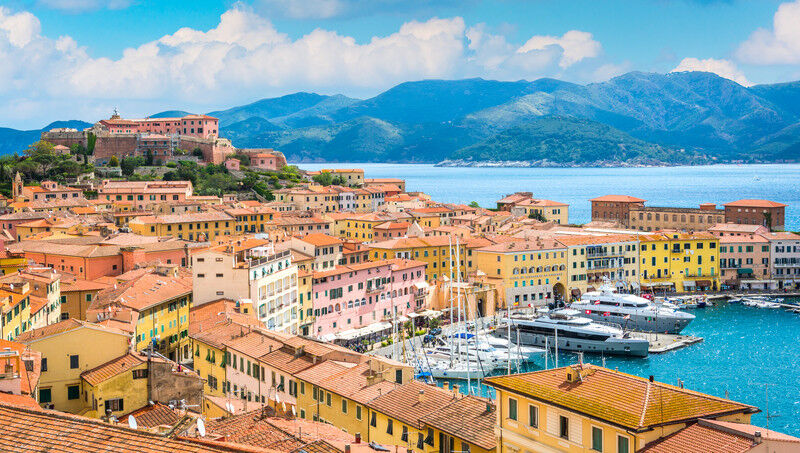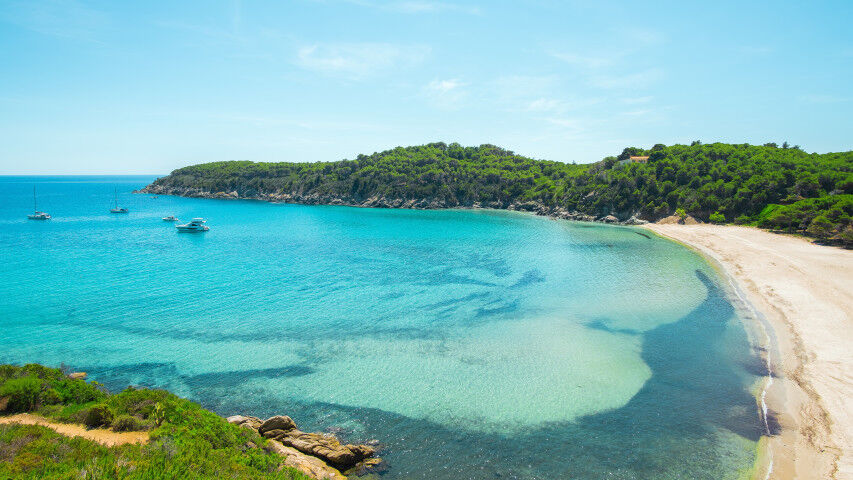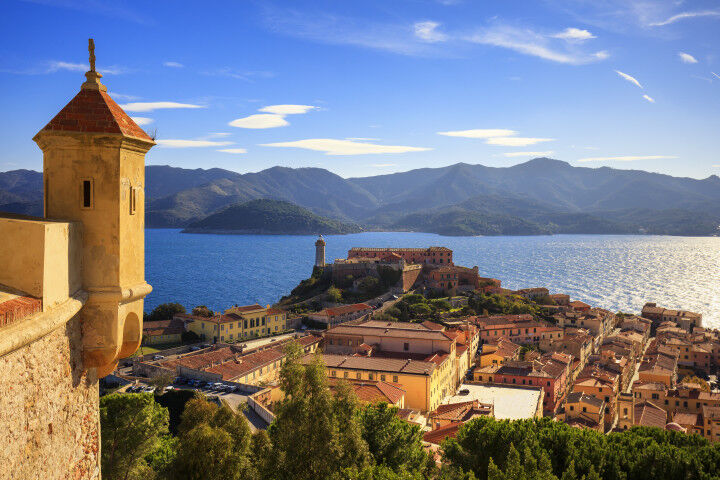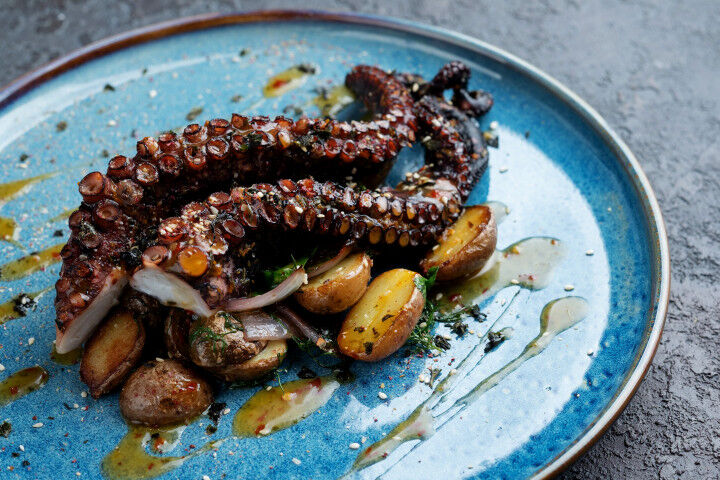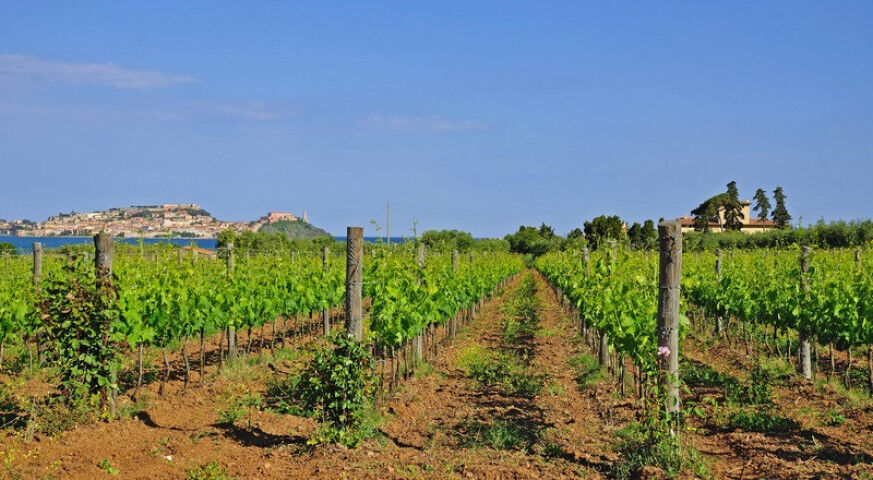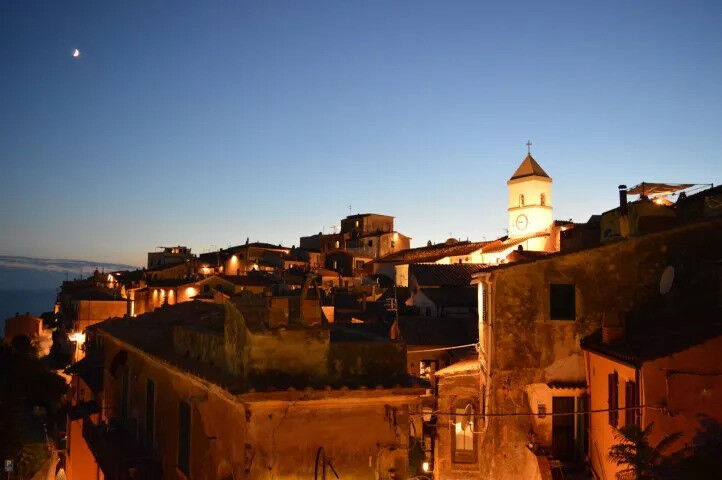Food and wine of Elba Island
This minute yet idyllic Tuscan paradise has consistently remained true to its roots, thanks to its citizens who pour their hearts into their local cuisine and culinary traditions.
Why is Elba island famous?
- Elba is the largest island within the Tuscan Archipelago, and is located about 10 km from the Tuscan mainland.
- Elba measures exactly 27km between Cape Ortano to Punta Nera, and a width of 18km from Elba’s north to south points, or from Cape Vita to Punta dei Ripalti.
- The coastal measurements of Elba instead featured a developed coast of 147 km, with a total island area of just over 220 km ².
- The lands of Elba are predominantly mountainous and articulated. The landscape reflects a morphology with distinctive geological formations. The island’s coasts are mostly elevated, and interspersed with small, sandy beaches. In the middle section of the island, we do find several beaches that conform more to the beaches typically found in alluvial regions.
- The island of Elba is an enchanting, classic Mediterranean island known for its panoramic, beautiful beaches, and for having been home to Napoleon Bonaparte during his infelicitous exile from France from 1814-15.
- Today, as throughout history, the island has been deeply characterized by the generous innate disposition of its residents, the natural sweetness of its environmental conditions, and the captivating simplicity of its traditional dishes.
- The sea, surrounding the islands on every facet of its land, is particularly sensitive to a changing environment, and is deeply reflected in the culture of this land.
What are the best places for beaches in Elba Island?
Elba offers access to over 200 beaches, all with a tremendous variety of local landscapes. Below, we’ve listed our top 5 beaches to visit, all of which are easily accessible. Oh, and will make you happy you selected Italy for a visit and not the Caribbean!
- Fetovaia Beach (Spiaggia di Fetovaia)
- Ghiaie Beach (Spiaggia delle Ghiaie in Portoferraio)
- Paolina Beach (Spiaggia della Paolina in Marciana Marina)
- Biodola Beach (Spiaggia della Biodola in Capannone)
- Sant’Andrea Beach (Spiaggia di Sant’Andrea)
What is the importance of Elba Island?
Man has inhabited this island, as proof shows, since the Iron Age. Indeed, the island’s first source of livelihood was the local extraction of iron and other heavy metals. This income source remained a primary source of sustenance for local workers up through the second half the 20th century.
The first groups calling Elba home were Ligurian tribes coming from today’s Northern Italian Riviera. These residents were soon followed by Etruscan groups, and ultimately the ancient Greeks of Magna Graecia.
Centuries of peace and tranquillity amongst the populace was interrupted by the Barbarian invasions, when the island of Elba transformed into a refuge of sorts for those fortunate enough to escape the marauding hordes of Barbarians who were currently invading Italy’s mainland.
As the years passed, the residents of 11th century Pisa took their turn at domination when they took control of the island to build fortresses ultimately intended to prevent attacks by passing raiders and Saracen pirates from Northern Africa.
Heading into the Renaissance era in Tuscany, the Medici family made their presence felt on this island as well. In the 16th century, Cosimo I de 'Medici gained control of the island’s northern segment, where he subsequently (and none-too humbly) founded the port city of Cosmopolis. Today the city is known as Portoferraio, and is one of the island’s largest cities.
What to eat in Island of Elba?
Elba is considered an authority on classic Mediterranean civilization thanks to its rich history. But not just historical civilization - the little-big island of Elba has also opened its gates to many classic local ingredients and specialities that have assumed a local flair that cannot be recreated off the island.
Elba’s mild, sunny climate, together with its fertile soil, sun exposure, and scarce rainfall, have together created an environment where every agricultural both indigenous and imported, retains an absolutely authentic concentration of flavor and taste.
Island of Elba’s Specialties: 3 Traditional Recipes
- Sburrita di Baccalà - a tempting fish stew with Baccalà (Cod) seasoned with local vegetables and toasted bread croutons
- Gurguglione - a delicious vegetable-based stew
- Schiaccia Briaca - traditional local sweet with a base of dried fruit and Aleatico red wine grapes
Local Fish Favorites
Contemporary perception of Elba’s residents as miners and great sailors doesn’t cover up the reputation the residents have as bad fishermen, even if this perception isn’t entirely true.
Today’s fishermen however, are more inclined to follow an artisanal approach to fishing, making the practice of fishing rather unique in its genre. What are today’s Elban fishermen looking for?
Atlantic Bonito
Here the Palamita, or Atlantic Bonito (sarda sarda), takes on a leading role in local cuisine. A relative of both mackerel and tuna, Palamita finds a wonderful expression in a variety of dishes where it’s exalted for the delicacy of its compact flesh, a great lack of scales, and for containing minimal bones.
While migrating around the coasts as it follows its primary food source, sardine shoals, the Palamita is best eaten in summer months. Tasty and finely consistent, the blue fish is a fine local ingredient enjoyed in a wide range of options.
Pelagic fish living in mid-range and depth waters are abundant in these areas, and include ample supplies of Anchovies, Sardines, Mackerel and other small blue fish varieties.
Equally present and beloved are the Common Octopus (the island features a boiled Octopus recipe that is truly found in every angle of the island), cuttlefish, lobsters and Black Sea bream.
The sheer variety continues with the presence of Picarel, White Sea Bream, Dogfish, Redfish, Mullets, Spotted Dogfish, and Snapper, to name a few.
Vegetables and Other Local Products
While the island’s aquatic resources are certainly impressive for quality and flavor, we can’t overlook the abundance of wild and cultivated greens that add so much to this remarkable cuisine. Chard, Borage, Spinach varieties, and Calamint are widely available across individual green gardens scattered throughout the islands.
Locally-grown and harvested vegetables like artichokes, cabbage, peas, and onions (don’t miss the specialty options from the Patresi area) partner deliciously with other local products. High-altitude specialties locals love to pair with local vegetables include fresh goat or sheep’s milk, mushrooms, and chestnut flour.
This beautiful pairing deliciously recreates a reflection of the island on dinner tables. It’s here where the local culture successfully transforms the various natural elements and leaves a surprising inestimable value to the local products. This care and attention has also led to the indication of a long-lasting evolution of style and imprinting on local ingredients and flavors.
Traditional Desserts
Dried fruit, primarily figs and raisins, paired with local almonds are still the primary base for many of Elba’s traditional dessert dishes. In particular we have Panficato, a dense semi-sweet bread, Imbollita di fichi, a Crostata-like fig pie, Schiacciunta, a cookie-like cake perfect for chillier winter months, Schiaccia Briaca, a beautiful scarlet-colored dessert traditionally baked during the holidays, Corollo, a fluffy round cake ideal at breakfast and tea times, Ceremito and Sportella, both semi-sweet breads traditionally baked during Easter time and gifted to one’s beloved as a token of affection.
Where to eat in Island of Elba?
Where to drink in Island of Elba?
Wine, as in much of Italy, is certainly not lacking a role in local cuisine. Thanks to the presence of many visitors, wine knowledge has also increased in the area. White selections like Vermentino, Procanico and Ansonica, and reds like Sangioveto selections, as well as dried-grape wines like Aleativco lack nothing when compared to their cousins on the Tuscan mainland. Very often, these local wines reflect a certain specificity that accompanies local dishes and specialities in ways other wines not from the area are simply not able to do.
If you’re looking for unique sensations and emotions to be experienced through your local wines, the wines of Elba certainly will not disappoint.
Which winery to visit in Island of Elba?
Is it worth going to Elba island?
The island of Elba remains a combination between rocky and wild and elegant and tamed. This island will appeal to the Robinson Crusoe on all of us thanks to its countless rocky coves with stunning beaches, shimmering blue waters, exciting winding roads to explore via car, and astonishing vistas dominated by the island’s highest peak, Mt. Capanne (1018 m).
All the natural beauty is partnered most pleasantly by a succulent seafood-based cuisine and some memorable, unusual wines. With such amazing food,wine, and sights, you won’t want to miss an exploration of the island’s perfect hiking, biking, and scuba diving as perfect activities to enjoy when you’re not relaxing by the beach or enjoying a fine meal.
